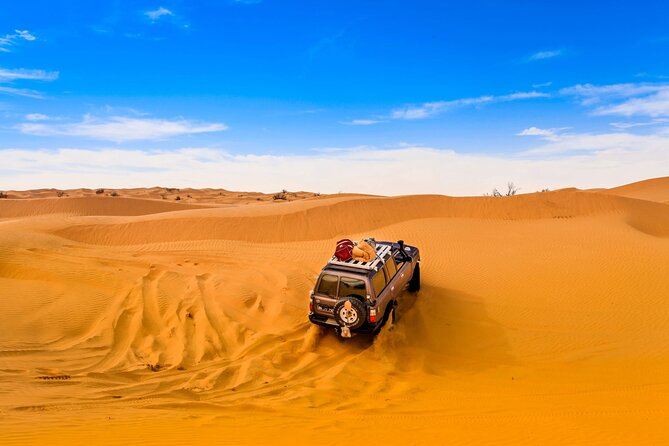The Tunisian Sahara, a vast sea of golden sand dunes and rugged landscapes, offers a captivating backdrop for a camping trip
This unique desert environment is home to exotic flora and fauna, intriguing archaeological sites, and nomadic communities that still preserve age-old traditions. Here's how to plan an unforgettable camping experience in the Tunisian Sahara.
Choosing the Right Location
The Tunisian Sahara spans across several regions, each with its distinct charm. The most popular areas for camping include the Grand Erg Oriental, the Sahara de Douz, and the Sahara de Ksour.
- Grand Erg Oriental: Known for its towering sand dunes, this region is a dream come true for avid photographers and adventure-seekers.
- Sahara de Douz: Famous for its ancient archaeological sites and proximity to Douz, the 'Gateway to the Sahara', this region offers a mix of culture and wilderness.
- Sahara de Ksour: With its stunning rock formations and Berber villages, this region provides a glimpse into the traditional Saharan way of life.
Selecting the Perfect Time
Spring (March to May) and autumn (September to November) are the best seasons for camping in the Tunisian Sahara due to their mild temperatures and minimal rainfall. Summer months can be unbearably hot, while winter nights can be surprisingly chilly.
Preparing Your Gear
Essential camping gear for a Tunisian Sahara trip includes:
- Lightweight tent
- Sleeping bag with appropriate temperature rating
- Insulating sleeping mat
- Compact stove and cooking equipment
- Plenty of water and food supplies
- First-aid kit and essential medications
- Headlamp or flashlight
- Navigational tools (map, compass, or GPS)
- Camping chair and table
- Multipurpose tool or pocket knife
Booking a Guided Tour or Going Independent
For first-time visitors, booking a guided tour is highly recommended. Reputable tour operators provide logistical support, transportation, and local expertise, ensuring a safe and enjoyable experience. However, experienced campers may opt for an independent adventure by obtaining the necessary permits from the Tunisian authorities.
Respecting the Environment and Local Culture
To minimize your environmental impact and show respect to the local communities:
- Use established campsites and avoid creating new ones.
- Follow the principle of 'leave no trace' – take all your rubbish with you when you leave.
- Dress appropriately and respect local customs and traditions.
- Ask for permission before taking photographs of people or sensitive areas.
Staying Safe
Desert camping can be challenging, so always prioritize safety:
- Check weather forecasts and seek local advice before setting out.
- Inform someone of your itinerary and expected return date.
- Stay hydrated and protect yourself from the sun with appropriate clothing, sunscreen, and a hat.
- Be prepared for sudden sandstorms by wearing a shemagh (traditional Arab scarf) over your head and mouth.
- Carry a well-charged mobile phone and a power bank for emergencies.
Adventure Activities
Enhance your camping experience by trying out some of these adventure activities:
- Sandboarding
- Quad biking
- Camel trekking
- Visiting ancient archaeological sites
- Stargazing – the Tunisian Sahara's crystal-clear night skies are ideal for observing the stars.
FAQ
Do I need a permit to camp in the Tunisian Sahara?
Yes, you need to obtain a permit from the Tunisian authorities. Tour operators usually handle this process, but if you're traveling independently, you should contact the relevant regional authorities for assistance.
Is it safe to drink the water in the Tunisian Sahara?
Tap water in Tunisia is generally safe to drink, but it's better to use bottled or purified water during your camping trip to avoid any potential stomach issues.
What kind of wildlife can I expect to encounter in the Tunisian Sahara?
The Tunisian Sahara is home to a variety of unique flora and fauna, such as the Addax antelope, dorcas gazelle, and various reptile species. You might also spot fennec foxes, jerboas, and several types of birds, including eagles and vultures.
